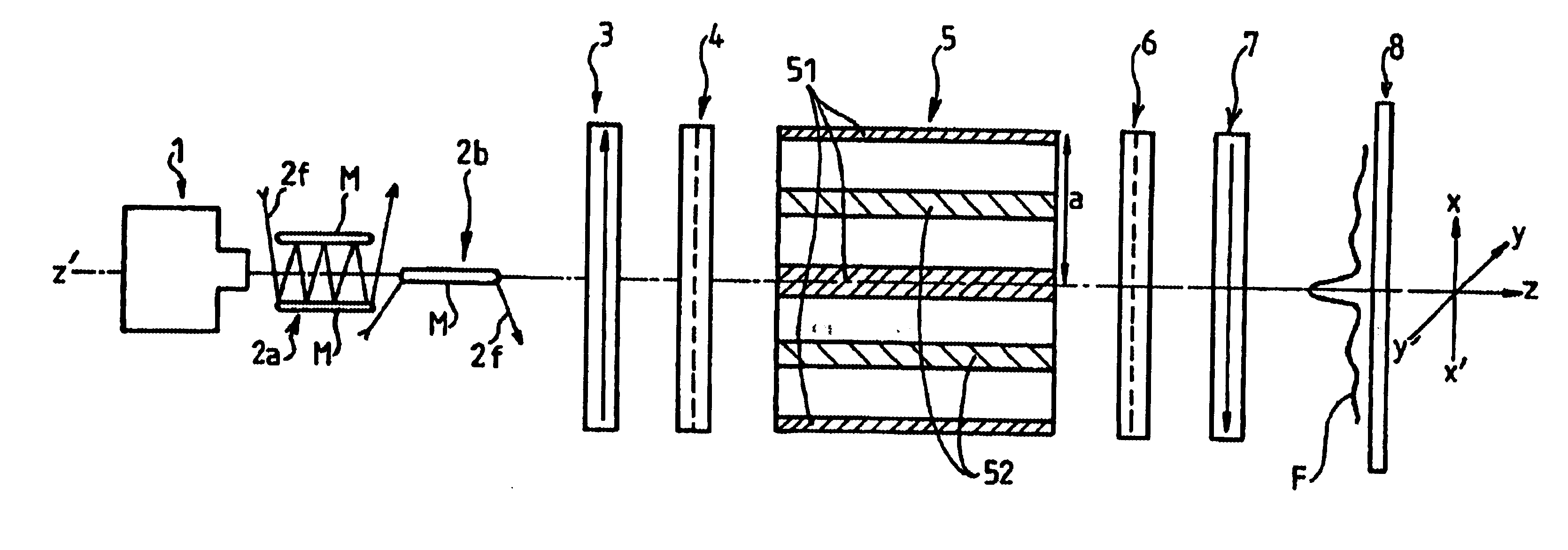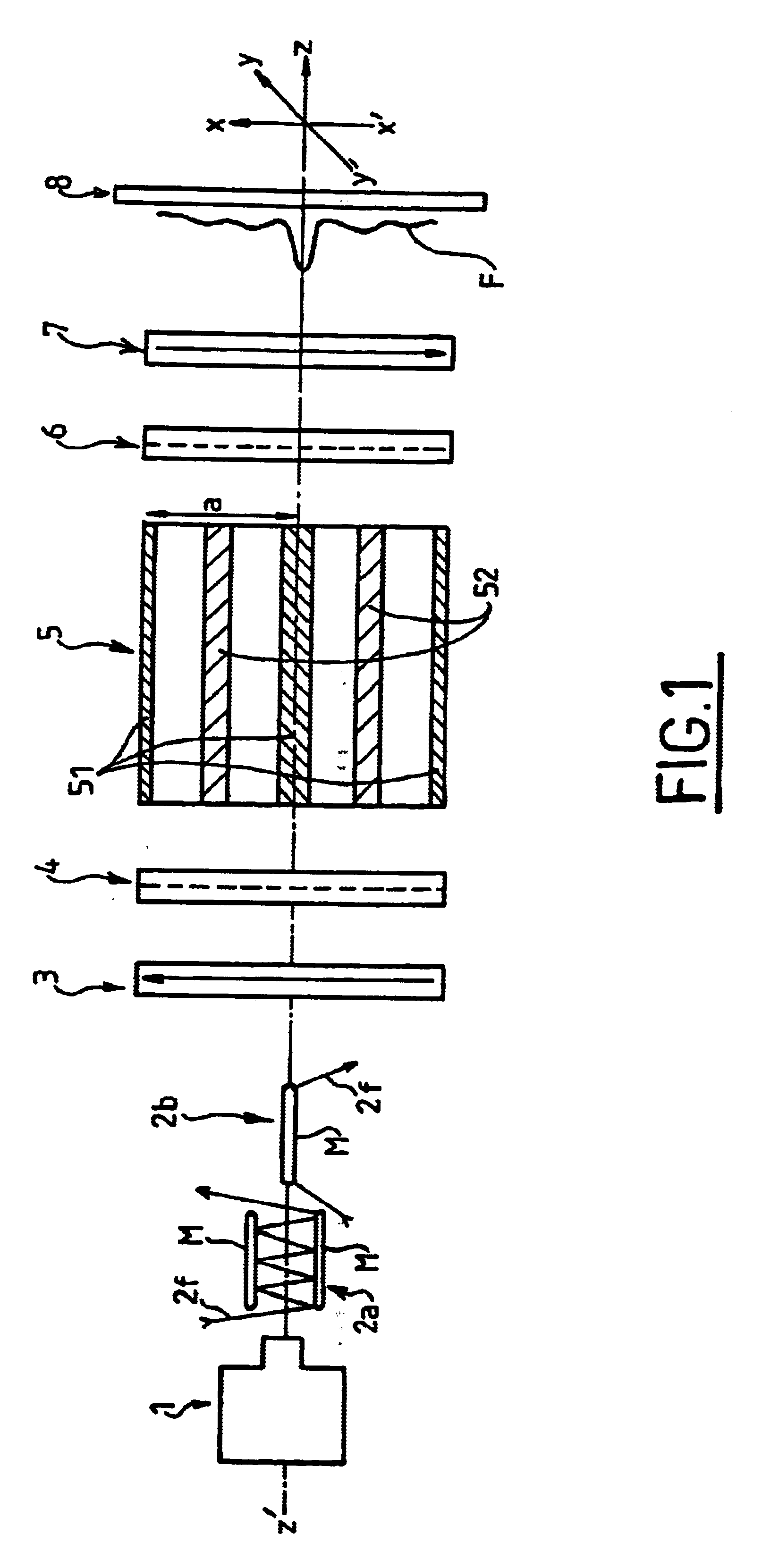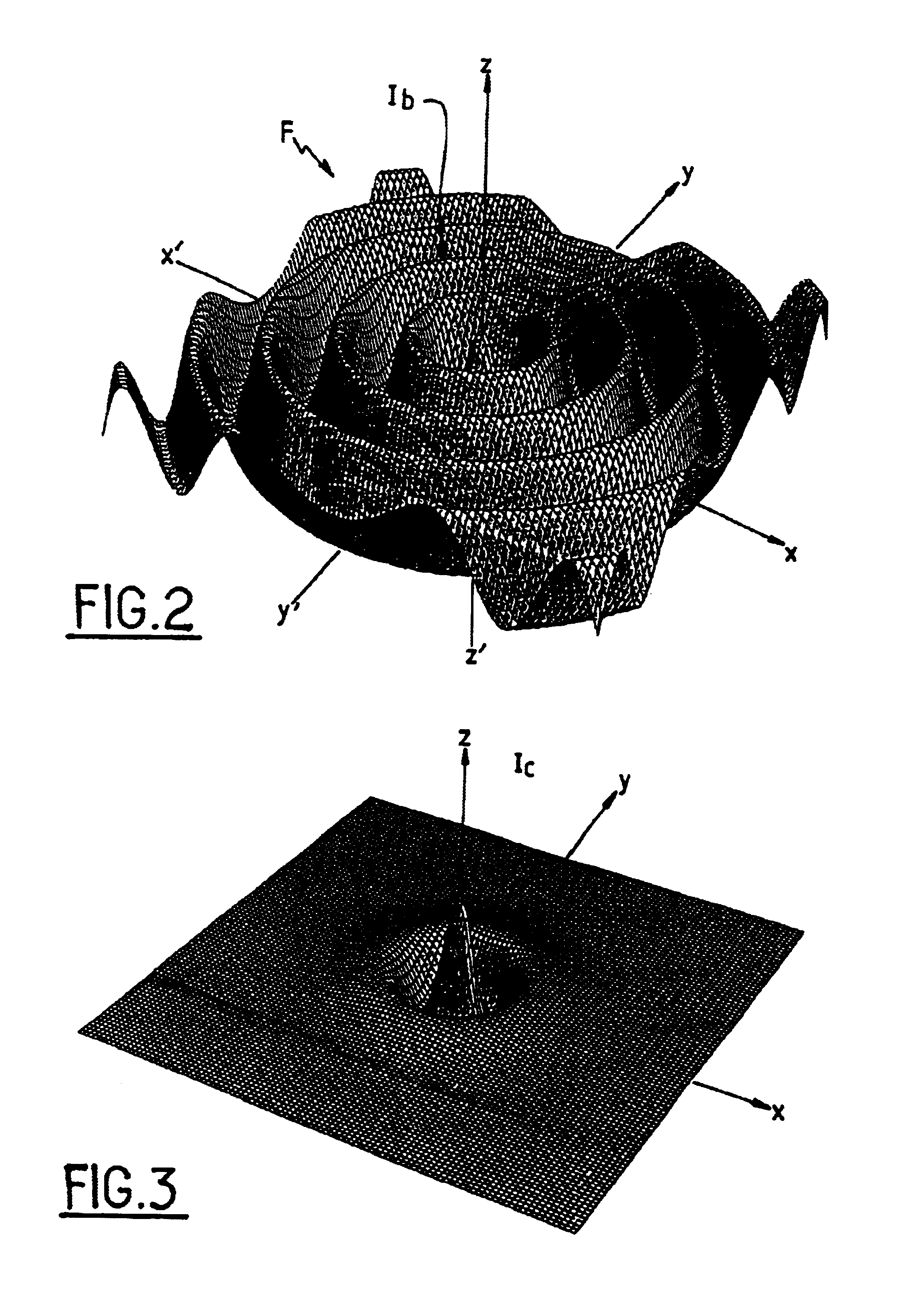Method and device for atomic interferometry nanolithography
a nano-lithography and interferometer technology, applied in the field of lithography, can solve the problems of limited resolution and inflexible use of installation, and achieve the effect of reducing the contrast of rings
- Summary
- Abstract
- Description
- Claims
- Application Information
AI Technical Summary
Benefits of technology
Problems solved by technology
Method used
Image
Examples
Embodiment Construction
[0031]The nanolithography installation shown in FIG. 1 is based on a Stern-Gerlach type interferometer. The component elements of such an interferometer comprise in succession, along a central axis Z′-Z, a polarizer 3, a set of bars 51 producing a transverse magnetic field forming the phase object between two separator plates 4 and 6, followed by analyzer 7 and then a detector 8 which is located at the position on the substrate where deposition or etching is to take place.
[0032]The atomic interferometer receives a beam of metastable helium atoms He* delivered by a source 1. The source has a continuous electrical discharge triggered in expansion through a nozzle between a conical tungsten electrode and the nozzle. The discharge takes place at a voltage of about 1 kiloelectron volts (keV) and at a current of several milliamps (mA). Advantageously, the discharge can be pulsed and the resulting gas can be cooled, e.g. using liquid nitrogen.
[0033]The density at which atoms are delivered ...
PUM
 Login to View More
Login to View More Abstract
Description
Claims
Application Information
 Login to View More
Login to View More - R&D
- Intellectual Property
- Life Sciences
- Materials
- Tech Scout
- Unparalleled Data Quality
- Higher Quality Content
- 60% Fewer Hallucinations
Browse by: Latest US Patents, China's latest patents, Technical Efficacy Thesaurus, Application Domain, Technology Topic, Popular Technical Reports.
© 2025 PatSnap. All rights reserved.Legal|Privacy policy|Modern Slavery Act Transparency Statement|Sitemap|About US| Contact US: help@patsnap.com



